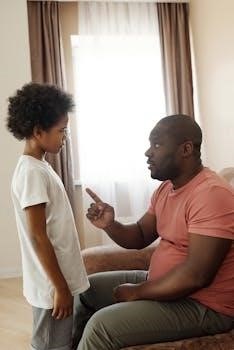
-
By:
- otis
- No comment
dysfunctional family roles pdf
Family, ideally a source of support, can sometimes be the breeding ground for dysfunction. Within these troubled systems, individuals often unconsciously adopt specific roles. These roles, while seemingly functional, ultimately perpetuate unhealthy patterns and hinder genuine connection. Understanding these dynamics is the first step toward healing.
Definition of a Dysfunctional Family
A dysfunctional family is characterized by persistent patterns of negative interactions, unhealthy communication, and impaired emotional well-being among its members. Unlike healthy families that foster growth and support, dysfunctional families often exhibit conflict, hostility, and emotional abuse, creating a toxic environment that hinders individual development.
Rigid rules, stifled emotions, and a lack of empathy are common hallmarks of such families. Communication is often poor, indirect, or even nonexistent, leading to misunderstandings and unresolved conflicts. Members may struggle to express their needs and feelings openly, resulting in emotional suppression and resentment.
Furthermore, dysfunctional families may exhibit a lack of boundaries, where personal space and individuality are not respected. Parentification, where children take on parental roles, and triangulation, where individuals are drawn into conflicts between others, are also common occurrences. These dynamics create a sense of instability and insecurity, leaving members feeling isolated and unsupported.
Ultimately, a dysfunctional family fails to provide a nurturing and supportive environment, leading to emotional distress, psychological problems, and difficulties in forming healthy relationships outside the family system. Recognizing the signs of a dysfunctional family is crucial for individuals seeking to break free from these patterns and create healthier lives.
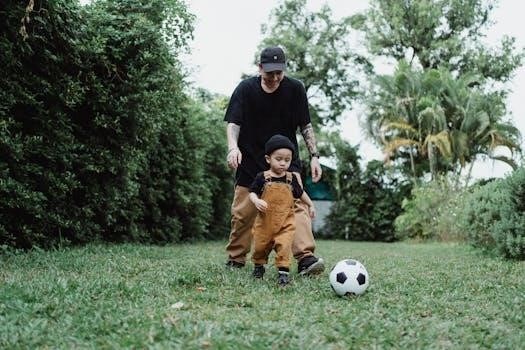
Common Dysfunctional Family Roles
In dysfunctional families, members often adopt specific roles to cope with the chaos and instability. These roles, such as the hero, scapegoat, lost child, mascot, and caretaker, are survival mechanisms that can have lasting impacts on their lives. Understanding them is key.
The Hero
The hero in a dysfunctional family often strives for perfection and high achievement. This individual seeks to bring positive attention and validation to the family, often compensating for the dysfunction present. They may excel academically, athletically, or professionally, becoming a source of pride for the family. The hero feels a strong sense of responsibility to maintain the family’s image, often at their own expense.
Driven by a need to please their parents and gain approval, the hero’s motivation is often external rather than intrinsic. They may suppress their own needs and emotions to prioritize the family’s perceived well-being. While their accomplishments may seem admirable, they often mask deep-seated feelings of inadequacy and a fear of failure.
The hero may struggle with perfectionism, anxiety, and difficulty setting healthy boundaries. They may feel overwhelmed by the pressure to maintain their role and may experience burnout or resentment. Despite their outward success, the hero may lack a sense of true self-worth and struggle to connect with others on an authentic level. The need to achieve often overshadows the importance of personal fulfillment.
The Scapegoat
The scapegoat in a dysfunctional family often becomes the target of blame and criticism. This individual is often seen as the “problem child” or the “black sheep” of the family, regardless of their actual behavior. They may be blamed for the family’s problems and used as a convenient outlet for anger and frustration.
The scapegoat often internalizes these negative messages and develops a poor self-image. They may act out in rebellious or self-destructive ways, further reinforcing the family’s negative perception of them. Despite their efforts to please their parents, they are constantly put down and criticized.
The scapegoat’s role is the opposite of the “golden child,” where the golden child can do no wrong, the scapegoat can only do wrong. The parents in a dysfunctional family may project their own insecurities and unresolved issues onto the scapegoat, making it difficult for them to develop a healthy sense of self.
The scapegoat may experience feelings of isolation, rejection, and resentment. They may struggle with anxiety, depression, and substance abuse. Despite the challenges they face, the scapegoat often possesses a strong sense of empathy and a desire for justice.
The Lost Child
The lost child in a dysfunctional family is often overlooked and neglected. They learn to become invisible, withdrawing from the family dynamic to avoid conflict or attention. This child may be quiet, shy, and unassuming, often blending into the background.
The lost child’s needs are often unmet, as the family is too preoccupied with its own problems to notice or care for them. They may feel lonely, isolated, and unimportant. They may struggle with feelings of low self-worth and a lack of confidence. They tend to be emotionally sensitive and might feel overlooked.
The lost child often develops a strong sense of independence and self-reliance. They may learn to take care of themselves and avoid asking for help. While this can be a strength, it can also lead to difficulties in forming close relationships and seeking support when needed;
The lost child may struggle with identity formation, as they have not had the opportunity to explore their own interests and develop a strong sense of self. They may feel lost and directionless, unsure of what they want in life. They may also be emotionally disengaged from the family system.
The Mascot
The mascot in a dysfunctional family is the comedian, the one who uses humor to diffuse tension and lighten the mood. They often act as the family’s emotional escape valve, diverting attention from underlying problems with jokes, silliness, and playful antics. The mascot child, similar to the lost child, seeks to emotionally disengage from the family system.
While seemingly positive, the mascot’s humor often masks deeper feelings of anxiety, fear, and sadness; They may feel responsible for the family’s happiness and constantly strive to keep everyone entertained. They are aware of the building tensions within the dysfunctional family household, and the mascot child attempts to find a way to dispel nervous energy in a positive way.
The mascot may struggle to express their own emotions authentically, as they fear it will disrupt the family’s fragile balance. They may suppress their own needs and feelings in order to maintain their role as the family’s entertainer. They may learn to be the clown or jester in the family system.
The mascot’s humor can be a coping mechanism to deal with the stress and dysfunction in the family. However, it can also prevent them from addressing their own emotional needs and developing healthy coping strategies. They may struggle to be taken seriously and may feel that their true selves are not seen or valued.
The Caretaker
The caretaker, also known as the enabler, is the family member who takes on the responsibility of managing everyone else’s emotions and needs. This individual often prioritizes the well-being of others above their own, sacrificing their own desires and boundaries to keep the family functioning, or at least appearing to function.
The caretaker role often stems from a deep-seated need for approval and a fear of conflict. They may believe that if they can just fix everyone else’s problems, they will earn love and acceptance. Caring for everyone else comes first, at a detriment to their own health⁚ both physical and emotional. Even if the rest of the family is chilling out and watching a movie, they’ll be folding laundry, mending clothes, meal planning for the week, or getting snacks and drinks for everyone.
In dysfunctional families, the caretaker may enable unhealthy behaviors, such as addiction or abuse, by making excuses for the perpetrator or cleaning up their messes. They may also act as a mediator between family members, trying to smooth over conflicts and prevent outbursts.
While their intentions may be good, the caretaker’s actions often perpetuate the dysfunction within the family. By constantly putting others first, they neglect their own needs and may develop resentment and burnout. They may also prevent other family members from taking responsibility for their own actions and growth.
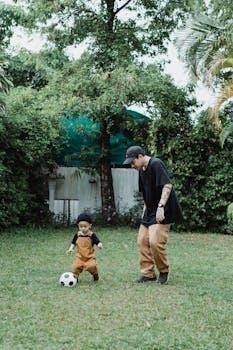
Impact of Dysfunctional Family Roles
Dysfunctional family roles, while attempts to cope, leave lasting scars. These roles, perpetuated over time, impact mental well-being and relationships. Understanding these effects is crucial for breaking free and fostering healthier connections with oneself and others in the future.
Effects on Mental Health
The impact of dysfunctional family roles on mental health is profound and far-reaching. Individuals forced into rigid roles often experience chronic stress, anxiety, and depression. The constant pressure to maintain their assigned persona can lead to feelings of inadequacy and low self-esteem. For instance, the “hero” may suffer from burnout and perfectionism, while the “scapegoat” battles feelings of worthlessness and resentment.
Furthermore, these roles can hinder the development of a strong sense of self. When an individual’s identity is defined by their function within the family, they may struggle to understand their own needs, desires, and aspirations. This can lead to a lack of authenticity and difficulty forming genuine connections with others.
The emotional toll of dysfunctional family roles can also manifest as physical symptoms, such as chronic pain, fatigue, and digestive issues. Suppressed emotions and unresolved trauma can disrupt the body’s natural healing processes, leading to a cycle of physical and emotional distress. Moreover, individuals may turn to unhealthy coping mechanisms, such as substance abuse or self-harm, to numb the pain and escape the overwhelming feelings of dysfunction.
Ultimately, addressing the impact of dysfunctional family roles on mental health requires a comprehensive approach that includes therapy, self-compassion, and a commitment to breaking free from the unhealthy patterns of the past.
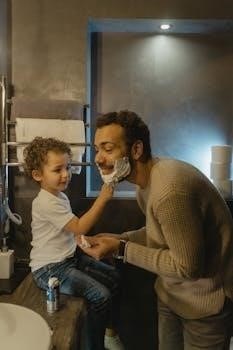
Breaking the Cycle of Dysfunctional Roles
Escaping dysfunctional family roles is challenging but achievable; It requires recognizing these patterns and committing to change. This process involves self-reflection, setting boundaries, and potentially seeking professional guidance to cultivate healthier relationship dynamics and personal well-being.
Awareness and Acknowledgement
The initial step in breaking free from dysfunctional family roles involves cultivating awareness. This means honestly examining your family’s dynamics and identifying the specific roles each member plays. It requires recognizing how these roles contribute to unhealthy patterns and perpetuate dysfunction. Ask yourself⁚ What role do I typically assume within my family?
Consider how your family interacts, communicates, and handles conflict. Are there recurring themes or behaviors? Look for patterns that might indicate underlying dysfunction. Are there unspoken rules or expectations that govern family interactions? Do certain members consistently take on specific responsibilities or exhibit particular behaviors?
Acknowledgement is equally crucial. It involves accepting that your family may be dysfunctional and that these roles have had a negative impact on your life. It’s about validating your own experiences and emotions, even if others in your family deny or minimize them. Acknowledge the pain, frustration, and resentment that may have resulted from these dynamics.
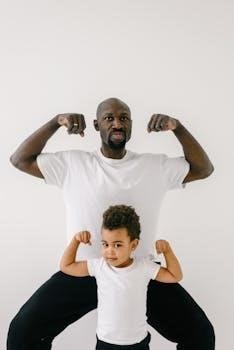
This step can be difficult, as it may involve confronting painful truths about your family and challenging deeply ingrained beliefs. However, it is essential for healing and growth. Without awareness and acknowledgement, it is impossible to break free from the cycle of dysfunction and create healthier relationships.